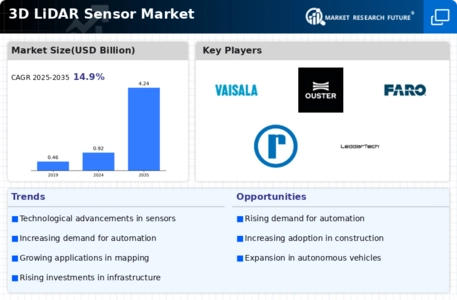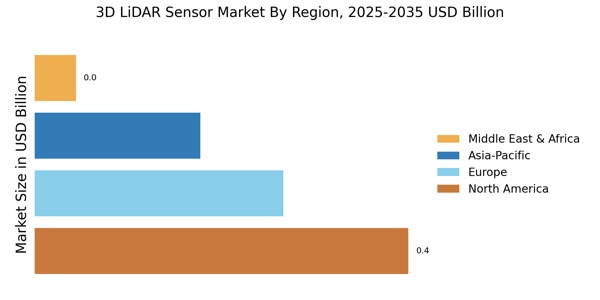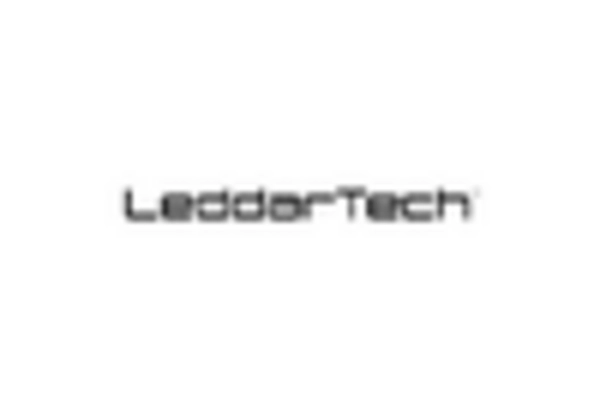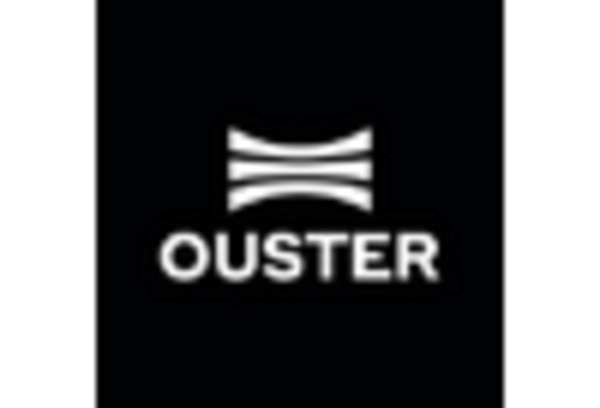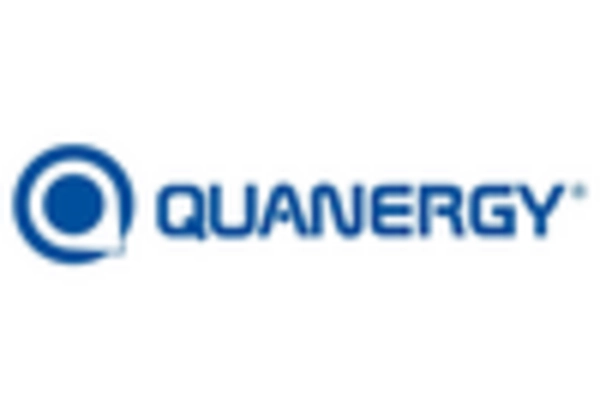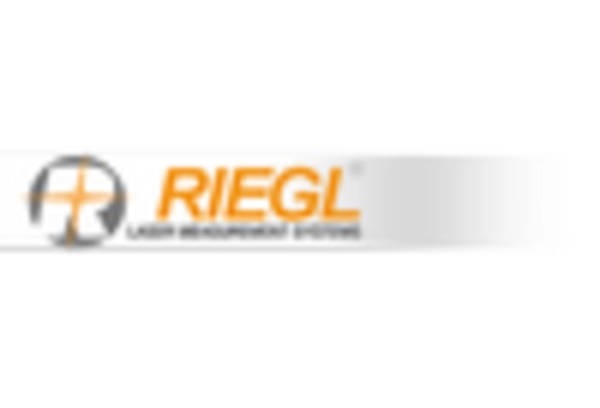Advancements in Robotics and Automation
The 3D LiDAR Sensor Market is poised for growth due to advancements in robotics and automation technologies. As industries increasingly integrate automation into their operations, the demand for precise spatial awareness becomes paramount. 3D LiDAR sensors play a crucial role in enabling autonomous systems, such as drones and robotic vehicles, to navigate complex environments safely and efficiently. The market for autonomous robotics is projected to grow at a staggering rate of 15% per year, driven by applications in logistics, agriculture, and construction. The integration of 3D LiDAR technology enhances the capabilities of these systems, allowing for real-time data processing and obstacle detection, which are essential for operational safety and efficiency.
Rising Demand in Environmental Monitoring
The 3D LiDAR Sensor Market is significantly influenced by the rising demand for environmental monitoring solutions. As concerns about climate change and natural resource management intensify, organizations increasingly rely on 3D LiDAR technology to gather critical data on vegetation, land use, and topography. This technology enables precise monitoring of forest biomass, coastal erosion, and habitat changes, which are vital for effective environmental management. Recent studies indicate that the environmental monitoring sector is expected to expand at a rate of 10% annually, reflecting the growing emphasis on sustainability and conservation efforts. The ability of 3D LiDAR sensors to provide detailed, three-dimensional representations of landscapes enhances decision-making processes in environmental policy and planning.
Increasing Adoption in Surveying and Mapping
The 3D LiDAR Sensor Market experiences a notable surge in demand due to its increasing adoption in surveying and mapping applications. This technology provides high-resolution, accurate data that is essential for topographic mapping, land surveying, and construction projects. As industries seek to enhance precision and efficiency, the integration of 3D LiDAR sensors into workflows becomes more prevalent. According to recent data, the surveying sector is projected to grow at a compound annual growth rate of approximately 12% over the next five years, driven by the need for detailed geographical information. The ability of 3D LiDAR sensors to capture millions of data points per second allows for comprehensive analysis, making them indispensable tools in modern surveying practices.
Expansion of Infrastructure Development Projects
The 3D LiDAR Sensor Market benefits from the expansion of infrastructure development projects worldwide. Governments and private entities are increasingly investing in infrastructure to support urbanization and economic growth. 3D LiDAR sensors provide critical data for planning, designing, and managing infrastructure projects, including roads, bridges, and buildings. The construction sector is expected to witness a growth rate of approximately 8% annually, fueled by the need for efficient project management and cost reduction. The ability of 3D LiDAR technology to deliver accurate and timely information enhances project outcomes, reduces risks, and improves collaboration among stakeholders, making it an essential tool in modern infrastructure development.
Integration with Geographic Information Systems (GIS)
The 3D LiDAR Sensor Market is increasingly influenced by the integration of 3D LiDAR technology with Geographic Information Systems (GIS). This integration allows for the seamless combination of spatial data with analytical tools, enhancing the ability to visualize and interpret complex datasets. As organizations seek to leverage data for informed decision-making, the demand for integrated solutions rises. The GIS market is projected to grow at a rate of 9% annually, driven by applications in urban planning, disaster management, and resource allocation. The synergy between 3D LiDAR sensors and GIS platforms enables users to create detailed, interactive maps that facilitate better understanding and management of spatial information, thereby driving the adoption of 3D LiDAR technology across various sectors.

